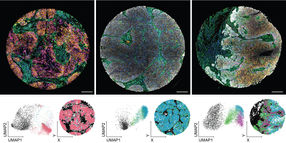Sensor to search for artery hardening compounds in blood
A water-soluble zinc-based fluorescent sensor to detect pyrophosphate in blood has been developed by scientists from China. Pyrophosphate plays an important role in metabolic processes in the body but a lack of the compound can lead to Mönckeberg’s arteriosclerosis – calcium deposits in arteries. Too much pyrophosphate causes calcium pyrophosphate deposition disease, where calcium pyrophosphate dihydrate crystals accumulate in connective tissues.
Zhilin Wang from Nanjing University and colleagues made the sensor by binding zinc to a water-soluble naphthalene functionalised tetraazamacrocyle. The resulting compound coordinates to pyrophosphate, forming a complex. They measured the fluorescence of the macrocycle in a neutral buffer solution, when zinc was added and finally when the resulting compound came into contact with pyrophosphate and found that the fluorescence intensities increased each time. The team then tested the sensor in blood serum and found that it performed as well as it had in the buffer.
Current sensors respond to pyrophosphate by changing the fluorescence intensity, which can be disturbed by the environment, says Wang. Ratiometric fluorescence sensors work by calculating the ratio of the fluorescence intensities at two different wavelengths, which is not affected by environmental factors. In the future, Wang hopes to test the sensor in vivo, in particular for toxicity.
Original publication: J Wen, Z Geng, Y Yin, Z Zhang and Z Wang, Dalton Trans., 2011.
Most read news
Organizations
Other news from the department science

Get the analytics and lab tech industry in your inbox
From now on, don't miss a thing: Our newsletter for analytics and lab technology brings you up to date every Tuesday. The latest industry news, product highlights and innovations - compact and easy to understand in your inbox. Researched by us so you don't have to.
























































